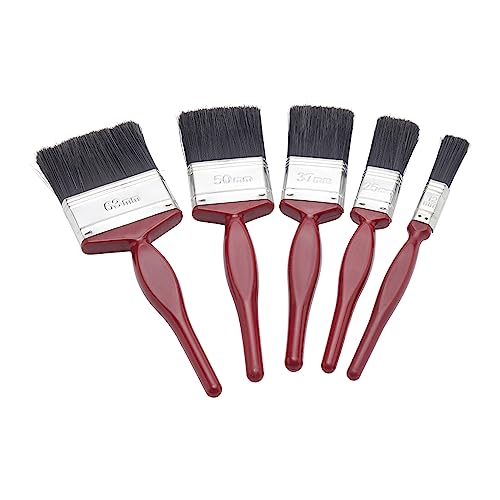The best paint brush for trim: A guide to choosing the right brush
Choosing the right paint brush for trim can make all the difference in achieving a professional-looking finish. With so many options available, it can be overwhelming to know which brush is best suited for the job. In this guide, we’ll explore the different types of paint brushes, their features, and how to choose the best one for your trim painting project.
Understanding the different types of paint brushes
Before diving into the specifics of trim brushes, it’s important to understand the different types of paint brushes available. The main types include:
- Flat brushes: These brushes have a rectangular shape and are ideal for large, flat surfaces.
- Angled brushes: These brushes have bristles cut at an angle, making them perfect for painting corners and edges.
- Sash brushes: Also known as trim brushes, sash brushes have a thinner profile and are designed for precision work, such as painting trim and window frames.
- Round brushes: These brushes have a rounded shape and are commonly used for detailed work, such as painting small surfaces or touch-ups.
Consider the bristle type
The type of bristle used in a paint brush can greatly affect the quality of the finish. There are two main types of bristles available: natural and synthetic.
Natural bristle brushes, typically made of animal hair, are best suited for oil-based paints. They are soft and provide excellent coverage, but they tend to absorb water-based paints, leading to bristle damage and an uneven finish.
Synthetic bristle brushes, on the other hand, are made of nylon or polyester and are ideal for water-based paints. They are durable, retain their shape well, and provide a smooth finish. Synthetic brushes are also easier to clean and maintain.
Size matters
When it comes to trim brushes, size matters. The size of the brush you choose depends on the size of the trim and the level of detail you want to achieve. For narrow trim, a smaller brush with a width of 1 to 1.5 inches may be suitable. However, for larger trim or wainscoting, a wider brush with a width of 2 to 2.5 inches may be more efficient.
In addition to the width, consider the length of the bristles. Longer bristles are ideal for painting intricate details, while shorter bristles provide better control for straight lines and edges.
Quality and durability
Investing in a high-quality paint brush is essential to ensure a professional finish and long-lasting durability. Look for brushes with tightly-packed bristles, as this allows for better paint retention and smoother application. The bristles should also be firmly secured to the handle to prevent shedding.
Consider the construction of the brush handle as well. Wooden handles are common and provide a comfortable grip, but make sure they are smooth and free of splinters. Brushes with metal ferrules (the metal band that holds the bristles in place) are generally more durable than those with plastic ferrules.
Customer reviews and recommendations
Before making a final decision, it’s worth checking customer reviews and recommendations to get an idea of the performance and durability of a particular paint brush. Online retailers and home improvement websites often provide helpful user reviews and ratings, which can give you insight into the brush’s performance and value for money.
Additionally, seek recommendations from professional painters or experienced DIYers who have successfully used a specific brush for trim painting. Their firsthand experience and expertise can be valuable in guiding your decision.
Ultimately, the best paint brush for trim will depend on your project requirements, personal preference, and budget. By considering the type of brush, bristle material, size, quality, and customer feedback, you’ll be well-equipped to choose a brush that delivers professional-looking results for your trim painting project.






